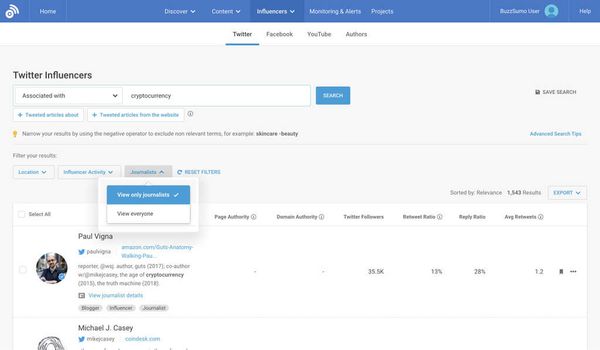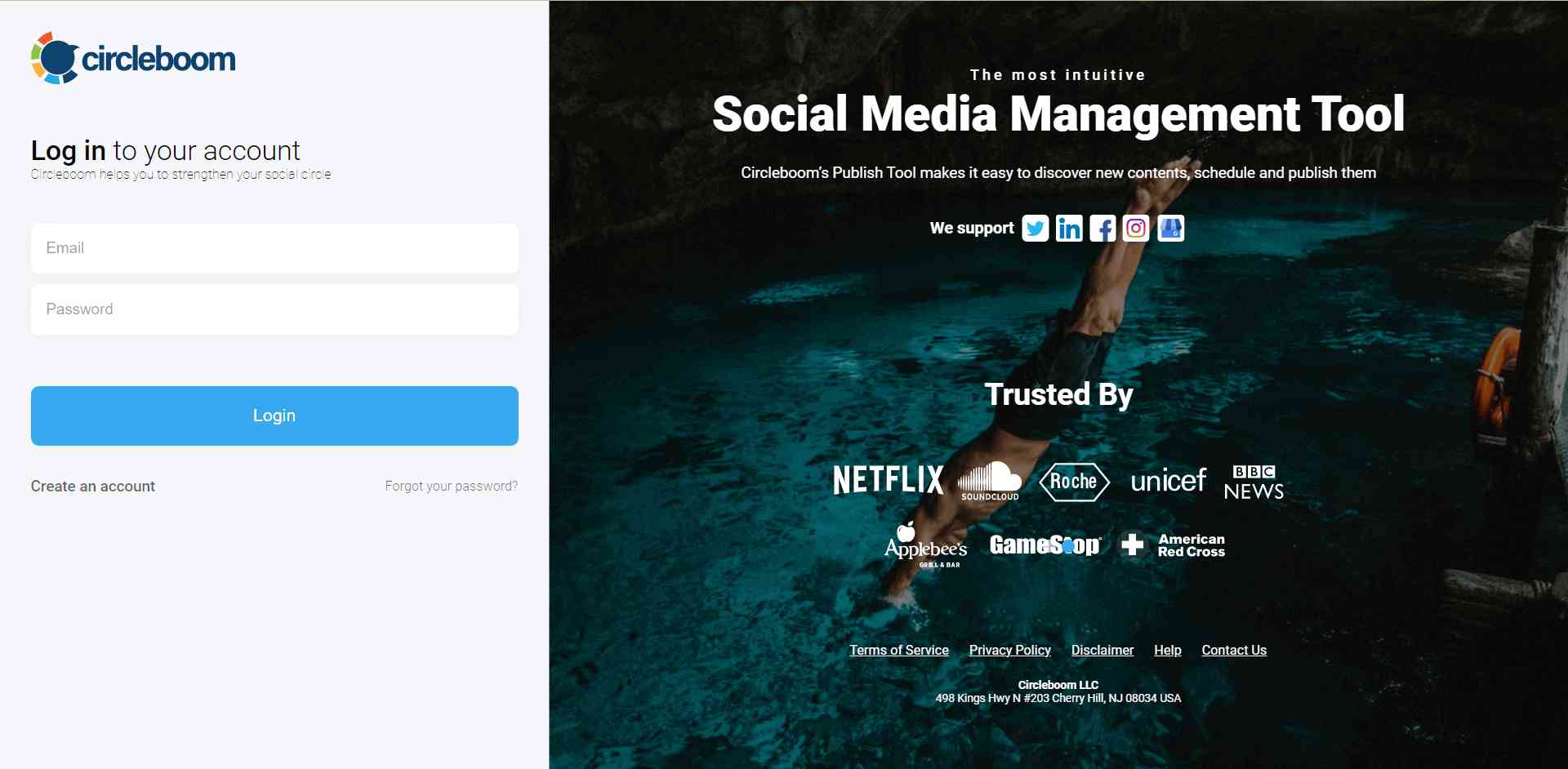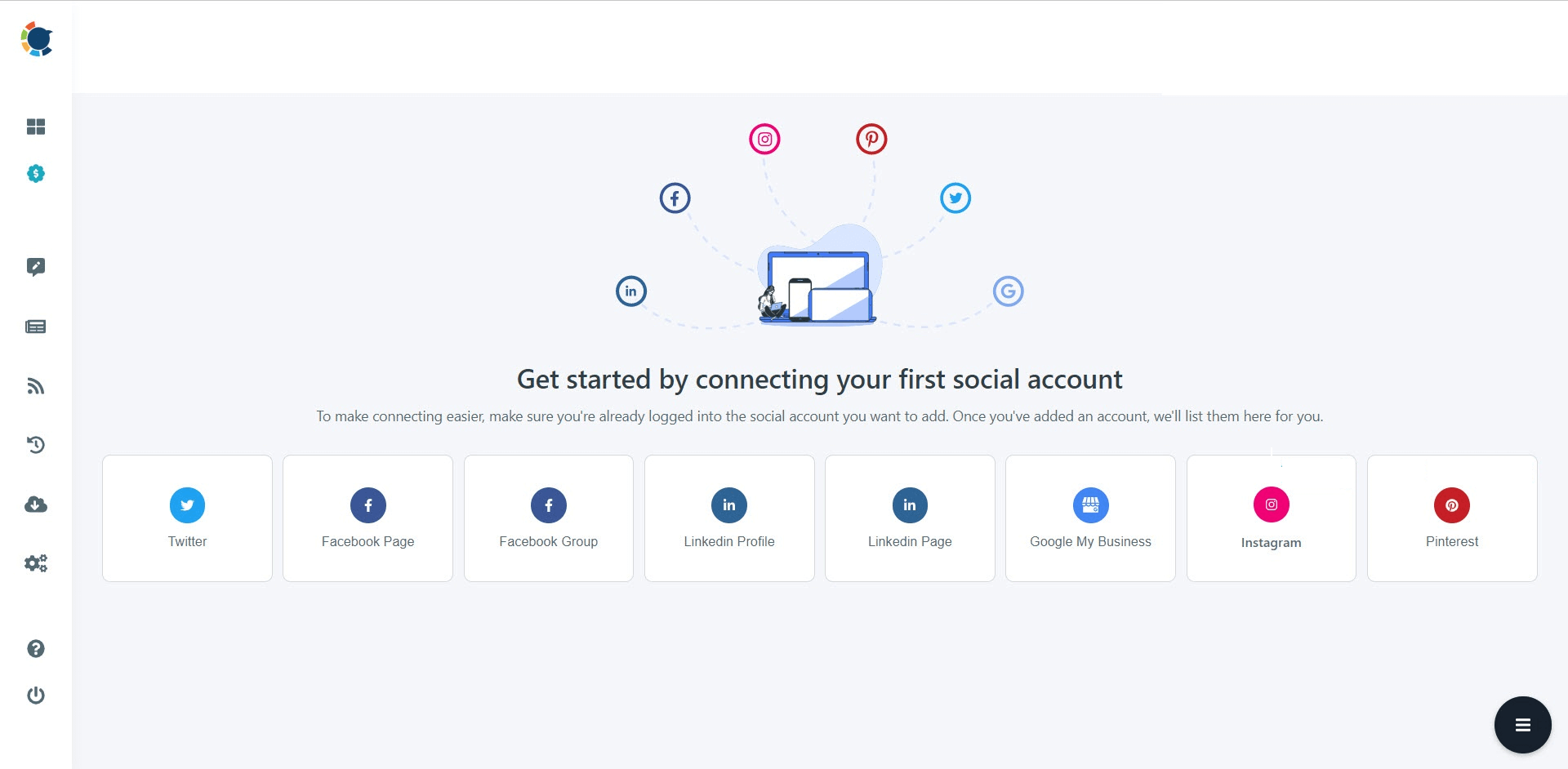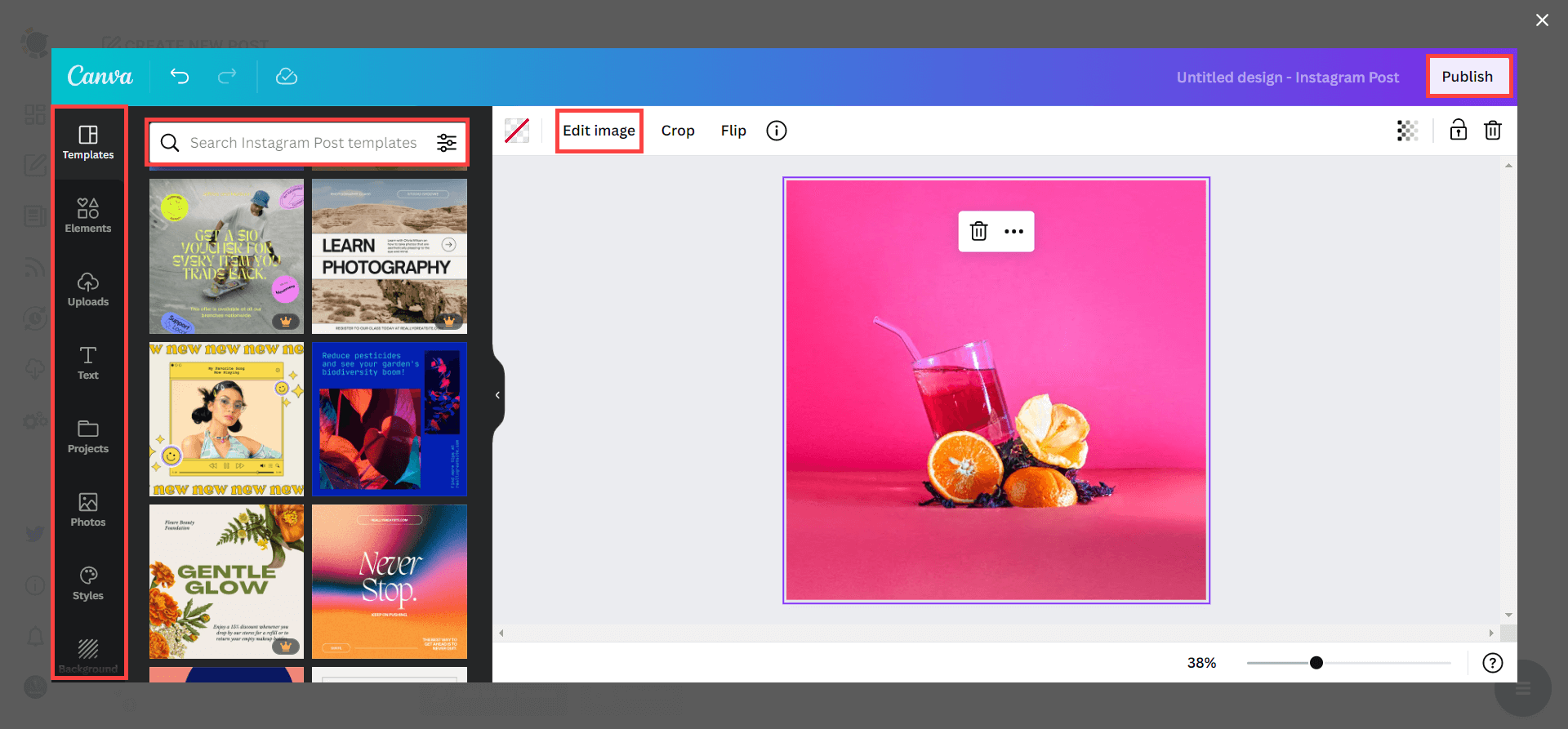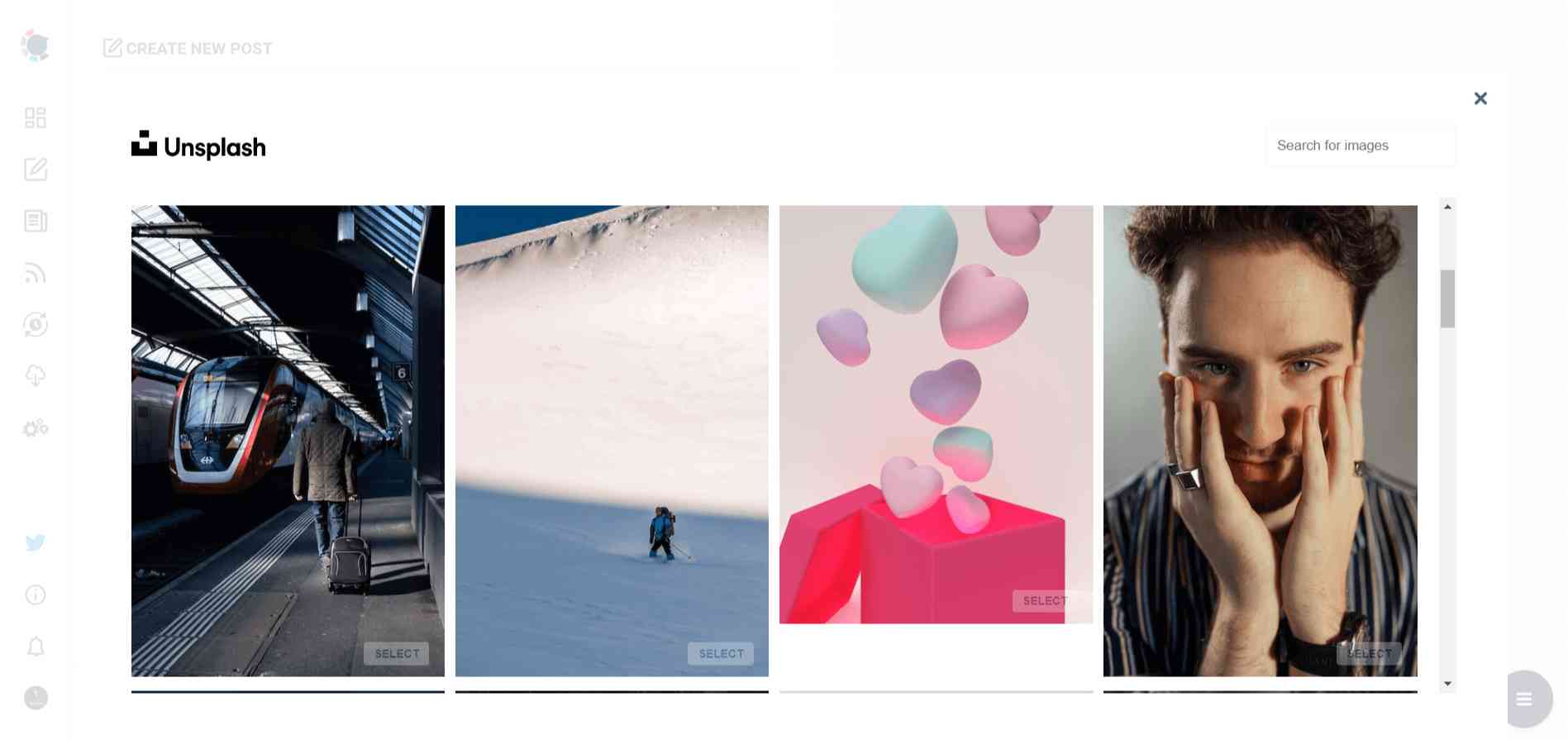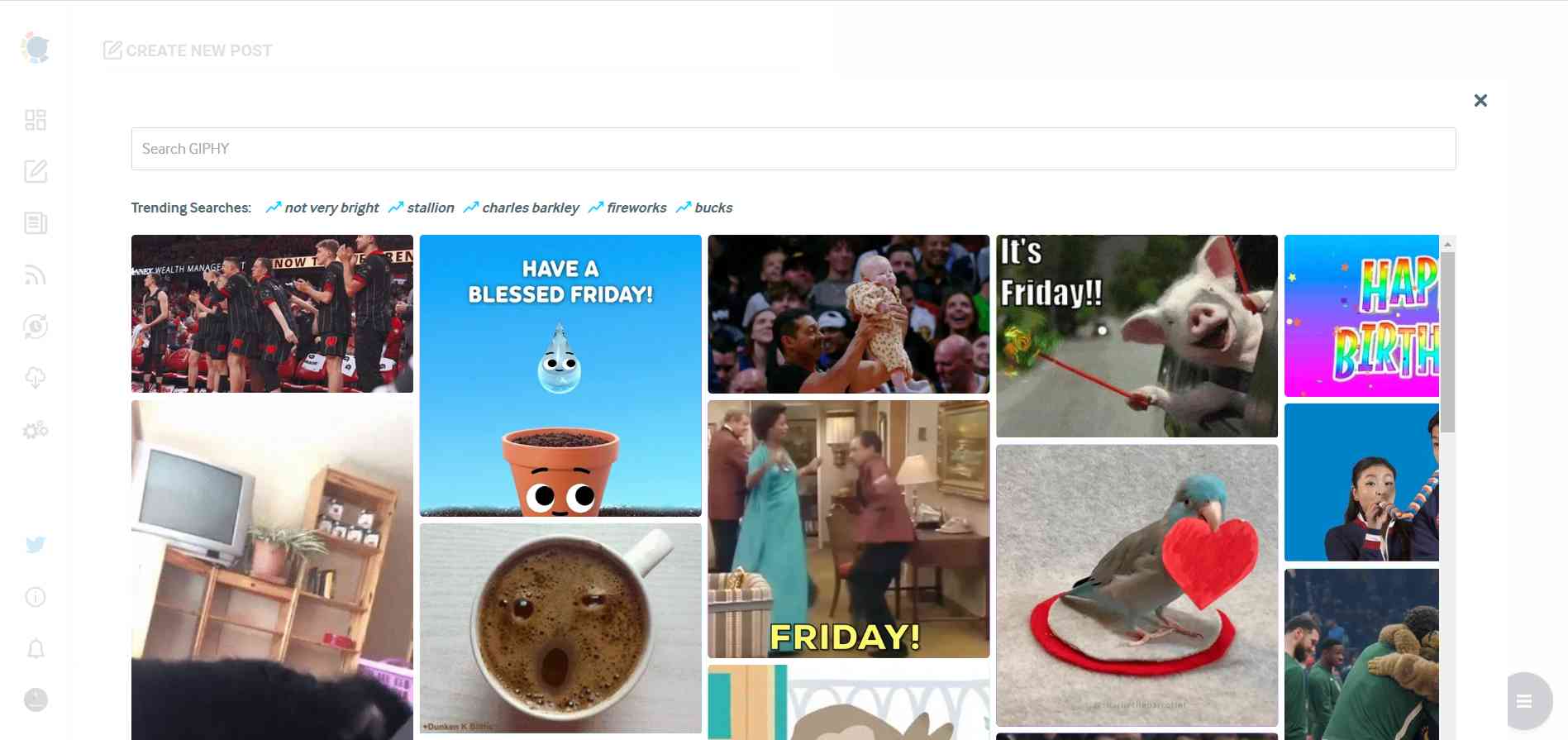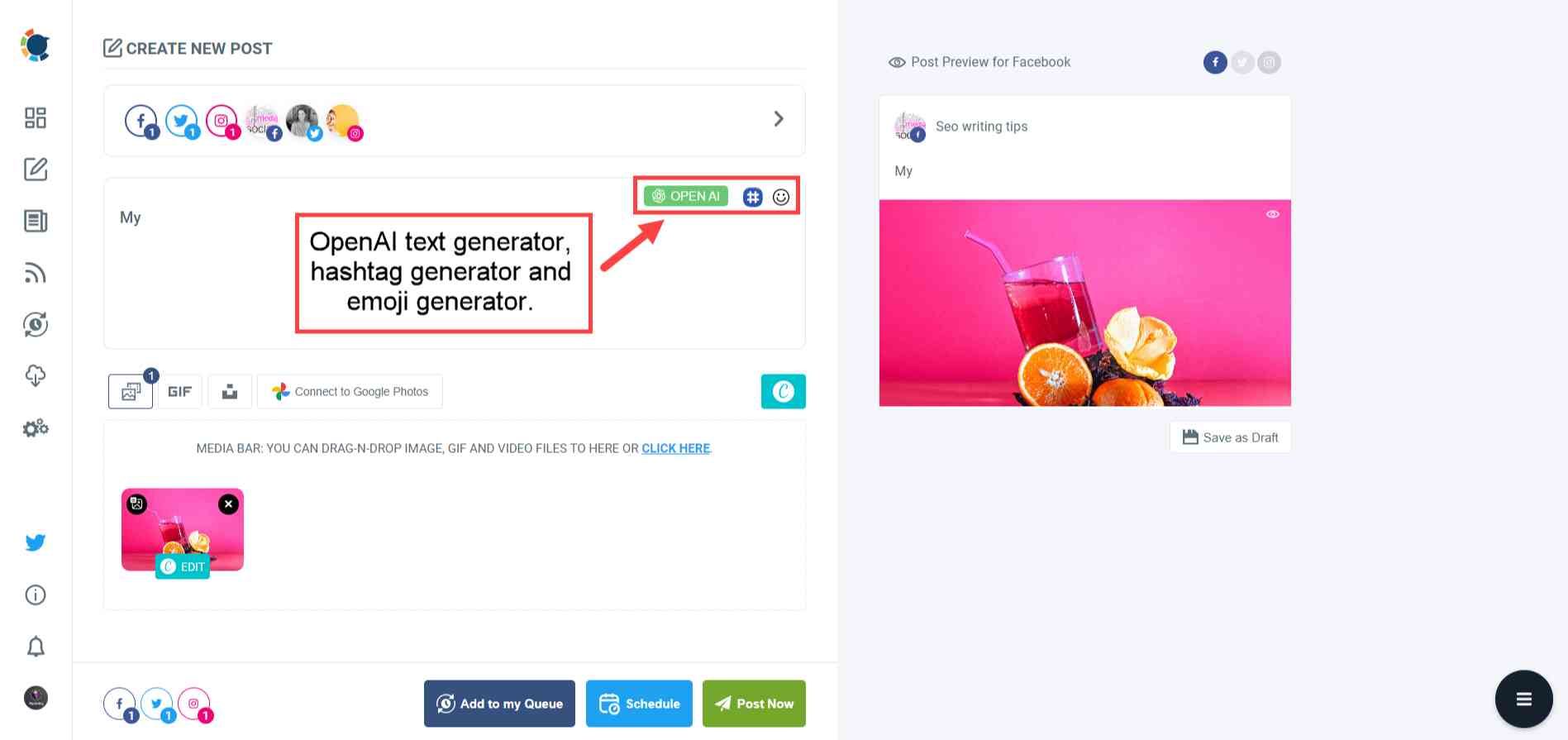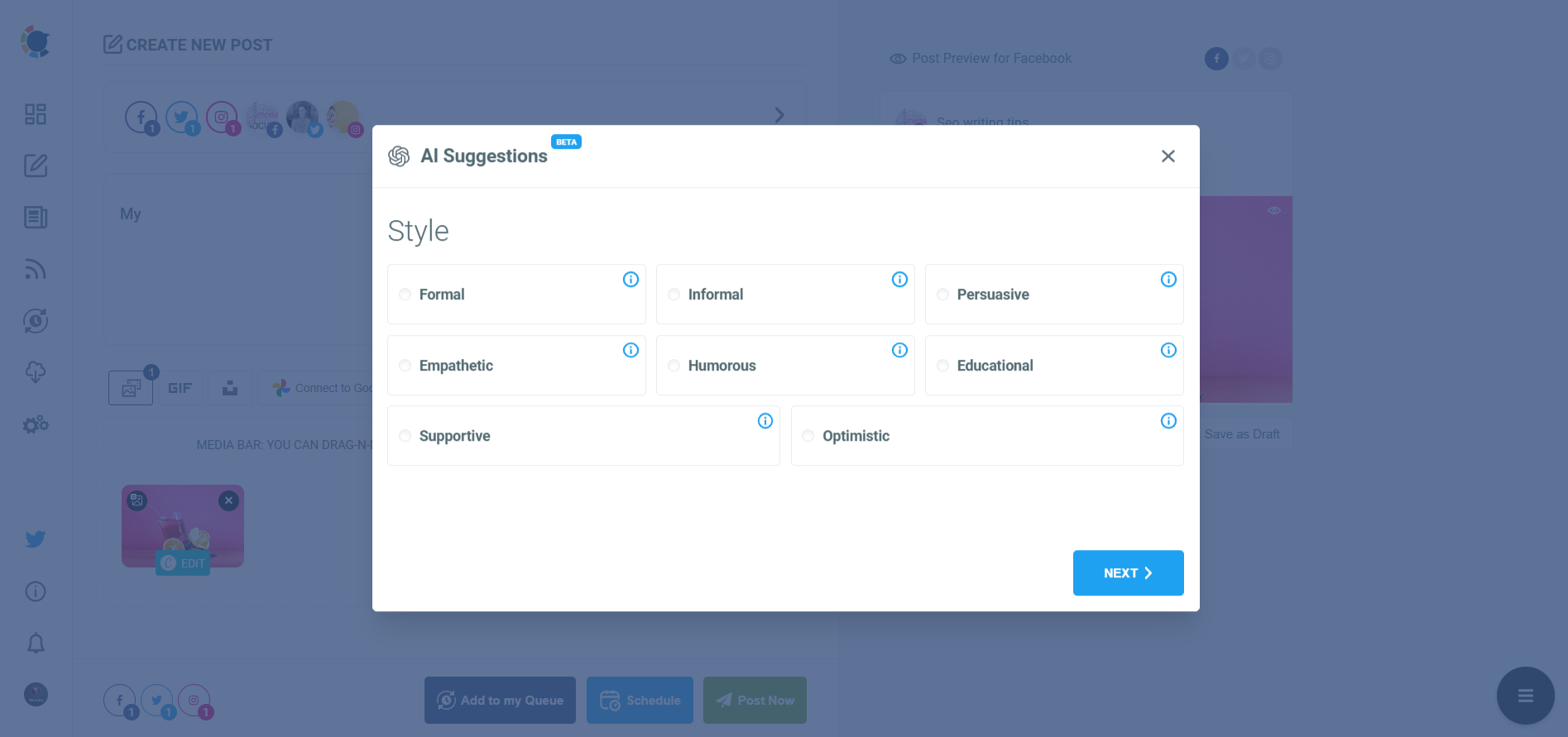Influencer marketing stands out as a transformative force in the dynamic digital realm, boasting a global market worth 21.1 billion U.S. dollars by 2023. It has revolutionized brand-audience interactions, providing a personalized and immersive avenue for advertising. This shift has led over 80% of marketers to allocate specific budgets for influencer marketing. Hence, asserting that those overlooking influencer marketing in their strategies are potentially losing a valuable opportunity is reasonable.
However, navigating the huge world of influencer marketing can be quite challenging without the right tools. That's where influencer marketing tools step in. Influencer marketing tools can help you save time and effort by streamlining your efforts, from finding the right influencers to tracking the success of your campaigns. That's why in this post, I’ll be sharing some of the best influencer marketing tools that I’ve come across, including Circleboom Twitter.
Circleboom - Engage with Influencers!
Circleboom enables influencers, brands, and SMBs to grow and strengthen their social media accounts.
Influencer Marketing Basics
What is an Influencer?
Influencers are people who have a large following on any social media platform, may it be Instagram, YouTube, TikTok, Twitter, Facebook, or Linkedin. As the name suggests, these people can influence the purchasing decisions of their followers with about 31% of social media users discovering new products through them.
What is Influencer Marketing?
Influencer marketing is simply a type of marketing that involves partnering with influencers defined above to promote your brand as well as your products and/or services. Influencer marketing can be a powerful way to reach new audiences, build brand awareness, and drive sales.
What Are Influencer Marketing Tools?
Influencer marketing tools are software that helps marketers find, engage with, and make deals with influencers in their niche. These tools can help you automate tasks, streamline processes, and use embedded business intelligence to run more successful influencer marketing campaigns.
Measuring the Success of Influencer Marketing
According to a global survey of 2023, social media marketers measure the effectiveness of influencer marketing campaigns based on different metrics. The most popular answer was brand awareness with 34%, followed by revenue/sales generation with 32%.
Preferred by less than 30% of the marketers were the measurement of impressions/views and engagement. Using clicks or brand mentions as ways of measurement was even less popular, both standing at 25%.
Result measurement has always been among the challenges of influencer marketing. That's what makes goal setting, budget determination, and influencer selection vital too. And that's also why the use of influencer marketing tools is much more beneficial than it seems. So let's check some of these tools.
Best Influencer Marketing Tools Listed
Here are some of the best influencer marketing tools that I’ve come across:
1. Circleboom
Being the most intuitive Twitter management tool, Circleboom Twitter lets you spot your influencer followers and friends. You can also find and analyze other Twitter influencers with Circleboom Twitter, making it a great influencer marketing tool for Twitter.
Search and list Twitter influencers with Circleboom Twitter: When you search for a keyword utilizing Circleboom Twitter's smart search feature, it goes through the tweets and bios of all Twitter users. However, you can also apply filters based on the number of followers, location, profile verification, and activity levels.
Then you will see all the Twitter accounts that match your criteria listed before you, giving you many different options. For example, if you are searching for NFT influencers in a specific location with a minimum of 30,000 followers, for example, typing "NFT" in the search bar and applying your filters will be more than enough to get a comprehensive list.
Find influencers in your network with Circleboom Twitter: Circleboom Twitter helps you identify potential influencers among your followers and friends on Twitter by analyzing profiles with high engagement rates and favorable followers/following ratios. By doing so, you can discover valuable accounts in your network who are already aware and maybe even interested in your brand. And the best part is that they will be only a single DM away from you.
Just hover over the "Friends" or "Followers" tabs on the left menu while you are on your dashboard, and you will be able to spot influencers in your network easily. You can also apply the same filters as a smart search after your influencer followers or friends are listed.
After identifying influencers either by smart search or spotting them through your network, you can list and/or export them with one simple click. You can also always choose to visit their profiles on Twitter to check them or directly contact them.
2. Aspire
Aspire is more like an influencer marketing platform than an influencer marketing tool. It specializes in influencer discovery, campaign management, and analytics. Aspire has a database of over 150,000 influencers and provides insights into their performance and audience demographics.
The solutions they offer are either based on specific company roles/types, or campaign goals. However, the pricing doesn't seem to be transparent.
3. Creator.co
Creator.co is another influencer marketing platform that can help you find influencers based on their location, interests, and engagement rate. Creator.co also provides insights into the performance of your campaigns and the influencers who participate in them.
It provides features such as influencer search & discovery, relationship management, campaign management, third-party analytics, automated recruiting, influencer lifecycle management, team collaboration tools, content review, campaign reporting, audience analysis, e-commerce tools, product/gifting tools, payment processing, and social listening. But combining all these together comes at a price, which might not be a fit for all budget types.
4. BuzzSumo
BuzzSumo is a content research tool that can help you find influencers in your niche. You can search for content related to your industry and see who is sharing it on social media.
Claiming to have multiple use cases including influencer marketing, BuzzSumo also provides insights into the performance of your content and the influencers who share it.
5. Brandwatch
Brandwatch has multiple tools, one of which is an influencer marketing tool that can help you find influencers based on their location, interests, and engagement rate. It also provides insights into the performance of your campaigns and the influencers who participate in them.
Some of its features are influencer search & discovery, relationship management, campaign management, third-party analytics, and campaign reporting.
Free Influencer Marketing Tools
Running on a tight budget? Then you might consider using free influencer marketing tools. But remember, they all come with some limitations, asking you to upgrade to use all the features. Let's take a look at them.
1- HypeAuditor
HypeAuditor is an influencer discovery tool that can help you find influencers based on their engagement rate, audience demographics, and other factors. HypeAuditor also provides insights into the authenticity of an influencer’s followers.
2- Grin
Grin is an all-in-one creator management platform with a huge network of over 32 million creators. Grin can help you with influencer marketing, creator management for branded content, public relations, affiliate marketing, and customer advocacy.
Though not all of its features are accessible for free, it also provides some free influencer marketing tools including a web extension.
3- Storyclash
Storyclash is an AI-powered Influencer Marketing Platform designed to enhance sales and brand awareness. The platform utilizes AI to assess the authenticity and brand compatibility of creators by analyzing their content and collaborations.
Users can reverse-engineer marketing strategies of influencer-focused companies, track and measure campaign success in real-time, and manage influencer and campaign data in a centralized system.
4- Upfluence
Upfluence is an all-in-one influencer marketing platform that can help you find, manage, and measure your campaigns. Upfluence has a database of over 3 million influencers and provides insights into their performance and audience demographics.
The main tool is a paid tool, but the free Google Chrome browser extension lets you analyze influencers when you are on their social media profiles, but of course with limitations.
5- Klear
Klear is an influencer marketing tool that can help you find influencers based on their location, interests, and engagement rate. Klear also provides insights into the performance of your campaigns and the influencers who participate in them. And it has 3 different free influencer marketing tools.
Understanding Influencer Tiers and Categories
Understanding influencer tiers and categories is crucial in devising an effective influencer marketing strategy. Influencers are often categorized based on their follower count, engagement rates, and reach across social media platforms. These categories typically range from nano-influencers (with smaller but highly engaged followings, usually below 10,000 followers) to micro-influencers (with moderately sized audiences, typically between 10,000 to 100,000 followers), and further up the scale to macro-influencers (with more significant followings, usually in the range of 100,000 to 1 million followers), and mega-influencers or celebrities (with millions of followers).
Each tier offers distinct advantages and caters to different marketing objectives. Nano and micro-influencers often possess niche audiences and higher engagement rates, making them adept at driving authentic conversations and building deeper connections with their followers. On the other hand, macro and mega-influencers often boast a wider reach, offering more significant exposure to a larger audience but potentially at the expense of diluted engagement rates. Understanding these tiers allows marketers to align their goals and target audiences with the most suitable influencers, optimizing their campaigns for either niche engagement or broader brand awareness.
Strategies for Identifying the Right Influencers
Identifying the right influencers involves a multifaceted approach that aligns with your brand's goals and target audience. Begin by defining your campaign objectives, whether it's boosting brand awareness, driving sales, or fostering engagement. Understanding your audience's demographics, interests, and behaviors is pivotal in choosing influencers who resonate with your brand ethos and can effectively communicate your message.
Leverage influencer marketing platforms and tools that offer robust search functionalities, enabling you to filter influencers based on various criteria like niche, location, engagement rates, and follower demographics. Analyze an influencer's content quality, authenticity, and engagement metrics rather than solely focusing on follower count. Look for influencers whose values align with your brand, ensuring an organic fit that enhances credibility and authenticity. Building relationships and engaging with potential influencers beforehand can offer insights into their communication style, audience interaction, and brand collaborations, aiding in a more informed selection process. These strategies collectively empower brands to identify influencers who can authentically represent their message and resonate with their target audience.
Effective Collaboration and Communication with Influencers
Effective collaboration and communication with influencers is the cornerstone of a successful influencer marketing campaign. Utilizing an AI meeting assistant can help structure these conversations, ensuring all key points are captured and acted upon. Prioritize transparency, ensuring influencers understand the brand's values, campaign objectives, and any guidelines or specific requirements for content creation.
Nurture a collaborative environment by encouraging influencers to share their creative input and ideas. Respect their expertise and allow creative freedom within the campaign framework to foster authentic, engaging content that resonates with their audience. Provide comprehensive briefs outlining campaign specifics while allowing room for influencers to infuse their unique style and creativity. Regularly engage in open dialogue, offering constructive feedback and support throughout collaboration to ensure alignment with brand messaging and campaign objectives. Effective partnership strengthens relationships with influencers and cultivates impactful, genuine content that resonates with their audience, maximizing campaign success.
Crafting Compelling Campaigns: Content Creation and Strategy
Crafting compelling campaigns in influencer marketing involves meticulous content creation and strategic planning. Start by defining the campaign's narrative and goals, aligning them with the brand's overall marketing objectives. Establish a cohesive strategy that resonates with the target audience and integrates seamlessly into the influencer's content style.
Focus on creating authentic, engaging, relatable content that captures the audience's attention. Encourage influencers to share personal stories or experiences that authentically connect with their followers while subtly integrating the brand message. Develop a content calendar or framework that outlines crucial deliverables, including posts, videos, stories, or other formats, ensuring consistency across various platforms.
At this point, I would like to introduce Circleboom Publish as the most comprehensive social media content creation and calendar tool. It supports Twitter, Instagram, Facebook, Pinterest, LinkedIn, and Google Business Profile. You can connect multiple profiles from each platform and manage them in one place!
Thanks to its AI Social Media Post Generator powered with ChatGPT and Canva, influencers can auto-generated images and texts for their social media campaigns.
This is an example process of how the AI post generator on Circleboom works:
Step #1: Log in to Circleboom Publish with your account.
If you don't already have a Circleboom account, you can get one in seconds for free!
Step #2: If this is your first time using Circleboom Publish, you will see several options for Twitter, Facebook, Instagram, LinkedIn, Pinterest, and Google Business Profile.
Select a platform and connect your social media profiles. You can add multiple accounts from each platform.
Step #3: You should click on the “Create New Post” button to generate posts. As you see, there are specific post options for each platform. You can choose them, too.
You’ll proceed to account selection.
Step #4: The social media image generator on Circleboom has 4 options: Canva, Unsplash, Giphy, and Google Photos. You can also upload your own files to send them directly.
Canva is where you can curate and design images as you wish. You can apply ready-made templates, filters, effects, and other kinds of elements to edit your image.
Also, you can use Unsplash to find auto-generated, high-quality images to share on your multiple social media images.
Giphy is where you can generate high-quality GIF images for your social media profiles.
Step #5: The next station is the social media text generator. Thanks to OpenAI integration, you can create auto-generated social media descriptions, captions, texts, and all kinds of texts enriched by AI-generated hashtags, emojis, and other extras like grammar checks or translations.
You can define the style of your words, warmth, etc., on Circleboom Publish.
Once your auto-generated text is ready, you can add it to your social media posts easily.
Step #6: You can also use Circleboom Publish’s native social media hashtag generator to find, create, and save relevant and popular hashtag groups for your social media posts.
Step #7: Once you generate your social media post, you can share it immediately, Or you can schedule it for the future.
Also, you can set time intervals and automate your posts.
Strategize the dissemination of content to maximize impact. Leverage diverse formats, such as Instagram posts, YouTube videos, or Twitter threads, catering to different audience preferences. Incorporate compelling visuals, interactive elements, or user-generated content to boost engagement. A well-thought-out content strategy coupled with captivating storytelling helps drive brand awareness, concentration, and conversion, elevating the effectiveness of influencer marketing campaigns.
Measuring Success: Analytics and Key Performance Indicators (KPIs)
Measuring success in influencer marketing requires a robust analytics framework and defined key performance indicators (KPIs). Establish clear and specific goals aligned with the campaign's objectives—increased brand visibility, engagement, lead generation, or conversions. Utilize analytics tools provided by social media platforms and third-party software to track and measure the performance of influencer-generated content.
Engage in a comprehensive analysis of various metrics, including reach, impressions, engagement rate, click-through rates, conversions, and sentiment analysis. Analyzing these metrics provides valuable insights into the campaign's effectiveness and the resonance of the content with the audience. It helps identify which influencers and content formats drive the highest engagement and ROI.
Refine the measurement strategy by identifying and focusing on KPIs that directly impact the brand's objectives. These could range from sales growth and website traffic to social shares and brand sentiment. Regularly monitor these metrics throughout the campaign's duration, allowing for real-time adjustments and optimizations to maximize impact and achieve desired outcomes.
Navigating Legal and Ethical Considerations in Influencer Marketing
Navigating legal and ethical considerations in influencer marketing is pivotal for a successful and compliant campaign. Adherence to regulations and ethical practices ensures transparency and credibility while protecting brands and influencers.
Firstly, compliance with the Federal Trade Commission (FTC) guidelines is crucial. Ensure influencers disclose their partnerships with clear and conspicuous language, using labels like "ad," "sponsored," or "paid partnership." This transparency prevents misleading consumers and maintains trust.
Moreover, respect data privacy laws. Understand the data collection and usage practices, ensuring compliance with regulations like the General Data Protection Regulation (GDPR). Safeguard sensitive information, obtain necessary permissions, ensure cloud compliance from data providers, and uphold user privacy throughout the campaign.
Embrace ethical practices beyond legal obligations. Encourage authenticity in content creation, promoting genuine testimonials and transparent opinions. Ensure alignment between brand values and the influencers' messaging to maintain credibility and build long-term relationships. Prioritize ethical behavior to foster trust and loyalty among your audience. Regularly educate influencers about evolving legal and ethical standards to ensure ongoing compliance.
Leveraging Influencer Partnerships Across Social Platforms
Leveraging influencer partnerships across multiple social platforms offers expansive reach and diverse audience engagement, enhancing the impact of influencer marketing efforts.
Begin by identifying influencers whose content resonates well on various platforms. Collaborate with influencers with a strong presence and credibility across different social media channels, aligning with your brand's target audience on each platform.
Tailor content strategies for each platform in collaboration with influencers. Leverage the strengths of each channel—such as visual content on Instagram, conversational engagement on Twitter, or longer-form content on YouTube—to maximize the campaign's effectiveness.
Encourage cross-promotion among influencers on different platforms to amplify reach. Collaborative efforts, like joint campaigns or coordinated content releases, can attract wider attention and foster a more integrated brand message across various social media landscapes.
Additionally, monitor and analyze performance metrics specific to each platform to continually optimize content and engagement strategies. By diversifying influencer partnerships across social media, brands can tap into a broader audience base and establish a more impactful online presence.
Case Studies: Successful Influencer Marketing Campaigns
Here is an example of successful influencer marketing:
Campaign Title: "StyleFusion x TrendSetters"
Objective: StyleFusion, a fashion-forward brand, aimed to increase brand awareness and drive sales for its latest streetwear collection targeting Gen Z and millennial consumers.
Strategy: Partnering with prominent fashion influencers across Instagram, TikTok, and YouTube, StyleFusion collaborated with diverse personalities known for their unique style and engaged audiences. The campaign focused on creating exclusive content showcasing the brand's collection, emphasizing its trendy, eco-friendly, and versatile designs.
Execution: Influencers were provided early access to the collection, allowing them to curate fashion lookbooks, style guides, and "haul" videos. Each influencer added their creative touch, emphasizing the collection's appeal and versatility across different occasions.
Impact: The campaign generated substantial buzz, driving over 1.5 million engagements across platforms within the first month. TikTok videos featuring the collection's transformational styling garnered over 10 million views. Instagram Stories saw a 25% increase in swipe-up rates, directly leading to a 30% surge in website traffic. YouTube haul videos contributed to a 40% spike in online purchases.
Key Takeaways:
- Diversifying influencer partnerships across platforms broadened the campaign's reach.
- Collaborating with authentic influencers resonating with the target demographic amplified engagement.
- Unique, creative content aligned with the influencers' styles increased audience interest and conversion rates.
Conclusion: The StyleFusion x TrendSetters campaign exemplifies the efficacy of strategic influencer partnerships across multiple platforms in enhancing brand visibility, fostering engagement, and driving substantial sales growth within the fashion industry.
The Future of Influencer Marketing: Trends and Innovations
Here's a glimpse into potential trends and innovations shaping the future of influencer marketing:
1. Micro and Nano Influencers Surge
As authenticity becomes increasingly crucial, brands turn to micro and nano influencers with smaller yet highly engaged followings. These influencers offer genuine connections with niche audiences, driving more authentic interactions and higher conversion rates.
2. AI-Driven Influencer Selection
Advanced AI technologies revolutionize influencer discovery and vetting. AI tools analyze vast datasets to identify influencers aligned with brand values, audience demographics, and engagement patterns, streamlining the selection process for optimal partnerships.
3. Virtual Influencers and CGI Avatars
The rise of virtual influencers—digitally created personas—opens new avenues. These avatars, powered by CGI and AI, offer brands opportunities to explore creativity, control messaging, and reach untapped markets with hyper-personalized content.
4. Sustainable and Purpose-Driven Campaigns
Consumers increasingly seek brands that align with their values. Influencer marketing is shifting towards sustainability and purpose-driven initiatives. Collaborations focusing on social responsibility, eco-friendly products, and ethical practices resonate strongly with audiences.
5. Immersive Experiences and VR Collaboration
With the integration of augmented reality (AR) and virtual reality (VR), influencers can offer immersive experiences. Innovative platforms like DeoVR are already enabling influencers to create spatial content experiences that their followers can enjoy in full 360-degree environments. Brands collaborating with influencers to create interactive content using VR technology will likely engage audiences on a deeper level.
6. Integration of E-commerce within Social Platforms
Social commerce continues to evolve. Future influencer marketing strategies may seamlessly blend content with direct purchasing options, allowing audiences to shop for products influencers endorse without leaving the social media platform.
These emerging trends and innovations signal a dynamic future for influencer marketing, emphasizing personalization, authenticity, technology integration, and purpose-driven campaigns. Brands embracing these trends stand poised to effectively engage with evolving consumer demands and preferences in the digital landscape.
Conclusion
Influencer marketing can be a powerful way to promote your brand and reach new audiences. With the right tools, you can find the right influencers and measure your campaigns more effectively. And with Circleboom Twitter, you can do much more than that...









